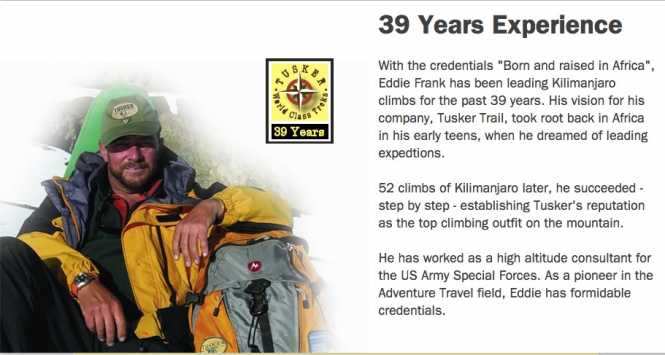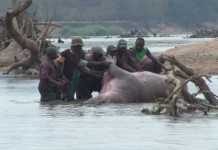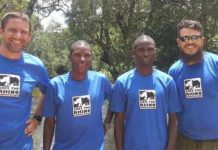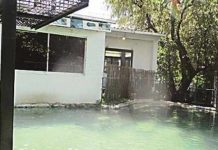By Tusker
On Patrol with the Desert Fox
Perhaps we were younger, more idealistic, and certainly more brazen. We thought we could slow the poaching tide in Zambia’s Kafue National Park or at least let the poachers and park officials know that local environmentalists patrolling alongside equally passionate outsiders were willing to fight for its wildlife.
Tusker founder Eddie Frank organized this anti-poaching mission in Kafue, the continent’s second largest national park with his Zambian friend and volunteer game ranger Shatis Vlahakis in the summer of 1994. It was the first of multiple patrols of his. I went along to write about the mission for Escape Magazine. Shatis and his cousin Gilly had conducted numerous Kafue missions in the previous decade. They had been shot at many times, confiscated ivory and meat and caught government officials red handed in the game.
Their fearlessness made them local legends and Shatis earned the nickname “The Desert Fox” partially because he was never intimidated and could either talk or shoot his way out of any life/death situation. With his AK-47 at his side riding in Eddie’s cruiser his non-stop commentary on the park and poaching made the long, hot ride bearable. His anger over the poaching was at a fever pitch, and he said,” my blood is boiling like hot chili peppers. ” Shatis’ Greek forebears slaughtered hundreds of elephants early in the 20th century and he was looking to making amends.
We spent a week roaming the park’s southern realm with rangers Shatis recruited through Nico Moya, a pharmacist from Namwala who hunted Kafue legally all his life and could read tracks better than any global positioning satellite. We found a poaching camp had a brief gunfire exchange, torched the poacher’s camp, and momentarily sent a message on the poacher’s telegraph. The message: you cannot poach with impunity because locals were willing to come into the park to defend its fantastic diversity. The park rangers with us estimated the area would remain untouched for the next six months.
Kafue’s miombo woodlands, swamplands and river corridors boast 158 species of mammals, 481 types of birds, 69 reptiles and 58 fish. Its herds of lechwe and sitatunga, marsh and swamp-loving antelope move gracefully in water to evade cheetah, leopard and poachers. But the park has long been in the shadow of Zambia’s famous Luangwa Valley National Park. Less than 1000 tourists visited Kafue in 1994. Mark and Delia Owens waged anti-poaching campaigns to put Luangwa on the global conservation map with their book “Eye of the Elephant” (1992) that chronicled their efforts to stop elephant poaching in North Luangwa. Kafue’s story was left untold outside Zambia but everyone locally knew that poaching was endemic and the park’s game had been decimated.
Where Have All the Rhinos Gone?
Kafue was a bloodbath for two decades prior to our arrival, when over 20,000 elephants were slaughtered and many smaller animals killed for their meat. Black Rhino were shot out in the 1970s and remain the most prized poaching target throughout southern and Eastern Africa today. The park’s poor infrastructure- parts are inaccessible in the wet season – were no match for the ivory syndicates who used boats, military and Red Cross vehicles to smuggle ivory out of the country.
We found the park’s game guards stuck at headquarters leading domestic lives with their wives and kids. With no vehicles and no ammo they seldom left headquarters. We provided both and we shared our Mosi, the country’s fine beer, around the campfire every night listening to their frustrations. Their inability to protect the park weighed on them and we provided some hope that we thought would carry over after we returned to our safe lives.
On our patrols in 100-degree heat we didn’t see a single elephant; they are too spooked to emerge during the day. The trip left me doubtful that anti-poaching was the ultimate answer to saving the park’s wildlife. There weren’t enough volunteer patrols or any will by the Zambian wildlife officials to successfully patrol the park on a consistent basis. In a country that is the ninth poorest in the world, where the life expectancy is 37 and where HIV has infected 25 percent of the population, how much effort could go into wildlife conservation? There had to be economic incentives to save and rejuvenate what was left.
Forward March: Wedding, School Bells
Fast-forward 16 years. Shatis is now operating a private school called Lwengu, which he and his wife, Joyce, built in the middle of the bush, outside of Monze, a town not far from the park’s southern boundary. Lwengumeans sable antelope in Tonga, the native language of the area. The school’s curriculum stresses environmental conservation and Shatis conducts the school’s frequent field trips into Kafue. He remains vigilant of the park’s wildlife and its administration. For many years after our mission he stopped his volunteer patrols as the Zambian Wildlife Authority (ZAWA) disbanded the program and relied on foreign aid.
This spring Shatis was contacted by the new regional manager of the park’s southern sector and asked to come back as an honorary wildlife ranger. “I hope this will greatly help us stop the slaughter of what’s left in the wild,” Shatis said. He plans to restart his patrols.
Gilly will not be going back on patrol. Soon after our poaching mission “The Pope” was arrested and accused of killing young boys and selling their organ parts for black magic rituals. He apparently upset some highly placed poachers in Monze and the charges were a setup. But he had enough connections to get out off. He has since left Monze for the capital, Lusaka, where he took a desk job.
Both Eddie Frank and I married soon after our Kafue trip and knew it wasn’t fair to our new wives to continue doing dangerous anti-poaching work. Frank is still supportive of Shatis efforts and anti-poaching work in general. “Any anti-poaching presence is warranted, given the fact that when we were doing it, the area we patrolled remained untouched for about 6 months, giving the wildlife a bounce back opportunity, which it did incredibly well. One of the big problems with poaching was also habitat destruction. Poachers would cut down vegetation for various uses. They also set fires as a way to flush game and also used fire as a weapon against their enemies.”
My sense of Kafue’s future was it needed investment both from tourism companies and large non-profits. I felt good about our mission but thought the park needed an injection of tourists who could be that extra set of eyes and ears on a frequent basis. Tourism could create jobs for villagers who lived on the park’s boundaries. Building roads that would make the park easier to patrol in the wet season was also a priority.
Today Kafue’s wildlife is making a comeback and in the second part of Tusker Geografica’s Kafue series we will chronicle Kafue’s comeback the last ten years.

 JOIN DRIVERN TAXI AS PARTNER DRIVER TODAY!
JOIN DRIVERN TAXI AS PARTNER DRIVER TODAY!











